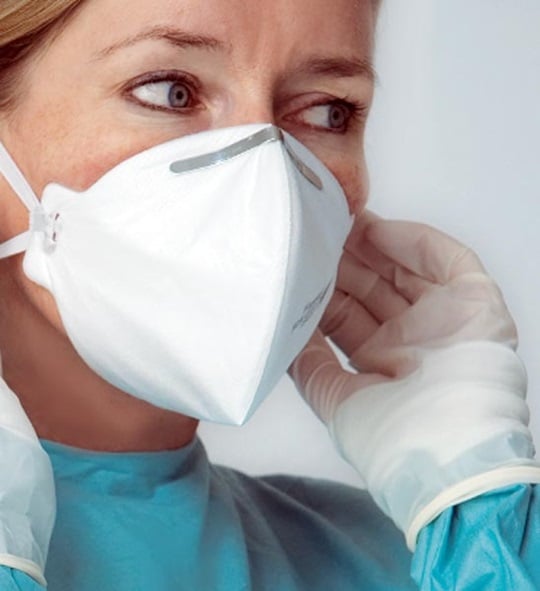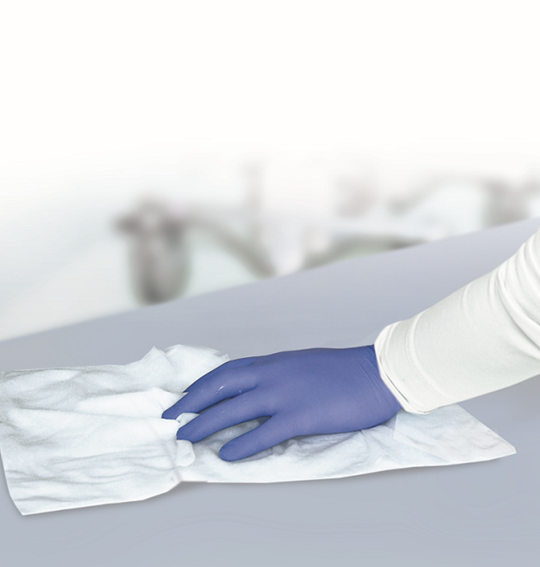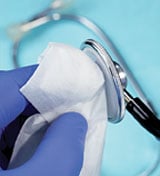HARTMANN SCIENCE CENTER

Hand hygiene is the key measure of standard precautions. In addition to alcohol-based hand disinfection, the main infection protection measure, it comprises skin care, skin protection and skin cleansing. Regular and systematic skin care is essential for preventing infections, as even the smallest cracks and microtraumas lead to a burning sensation when using hand disinfectants and complicate their proper application.
When hands are visibly soiled, they should be washed before hygienic disinfection.
FURTHER INFORMATION: Poster: 5 moments for hand hygiene

Protective gowns are used for situations with a high potential for direct contact with blood, secretion, or excretion, and, for patient safety reasons, are taken off after the nursing/medical activity and before treating another patient (hand disinfection afterwards).When removing the gown, it has to be made sure that skin and working clothes do not become contaminated. Plastic aprons are used instead of or together with protective gowns, when it has to be expected that the clothes are drenched.

Single-use gloves are worn in case of risk of exposure to mucous membranes, non-intact or contaminated/colonised skin, blood, body fluids, secretion and excretion, or in case there is a potential risk of stab injury. When using the wrong technique for glove removal, the previously protected skin may come into contact with the contaminated glove exterior, or the hand may become contaminated.
FURTHER INFORMATION: Removing protective gloves properly

Face masks (nose/mouth protection) should be put on when blood, bodily fluids, secretion or excretion may splash into the face, or to avoid an unintended contact between hands/gloves and face. For invasive surgery, e. g. operations, to protect patients against the transmission of pathogens, which can be transmitted orally by the staff.

Possibly contaminated work spaces and surfaces near patients coming into frequent contact with hands and skin should be treated with surface disinfectant cleaners routinely. Surfaces contaminated by blood, body fluids, secretion and excretion require targeted disinfection.

Medical devices that can be used several times must be reprocessed according to the manufacturer's instructions.
In Germany, medical devices must be reprocessed using validated procedures after contamination or use in accordance with the recommendations of the KRINKO and the BfArM [2].
Waste disposal is carried out in accordance with the manufacturer's specifications and the Federal/State Working Group on Waste (LAGA) for the disposal of waste from healthcare facilities. [3].
Used and contaminated linen must be collected and transported in such a way that there is no risk of contamination or infection. Laundry shall be reprocessed using disinfecting procedures that are regularly checked for effectiveness. After reprocessing, it must be ensured that clean and low-germ linen is available to each patient.
It must also be ensured that the tableware is clean and disinfected.
Patients and visitors should be informed about hygiene measures, e.g., in case of colonisation with MRSA, in order to be able to contribute independently to infection prevention.
Patients with an increased risk of transmitting infectious diseases shall be accommodated in single rooms as far as possible.
Derivation of risk-minimising, in this case infection-preventive measures in practice - Importance of standard hygiene and, if necessary, supplementary measures to protect patients and staff from nosocomial infections [2].
Sources:
